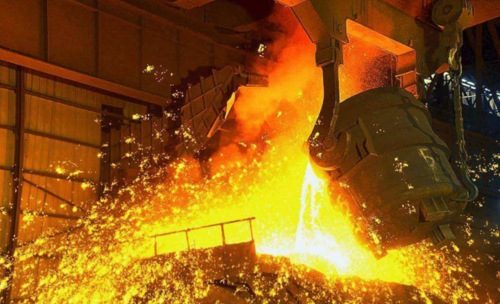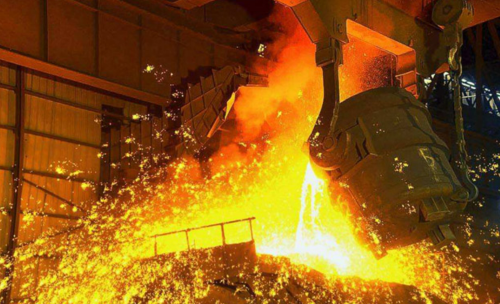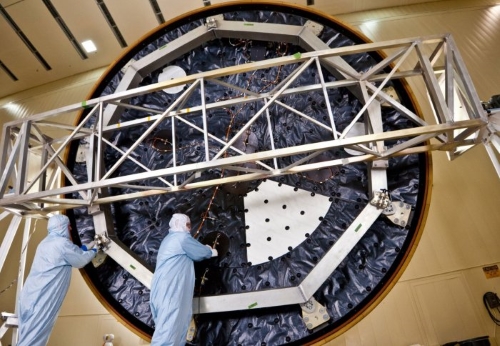A List of the Strongest Heat-Resistant Materials

Heat-resistant materials play a crucial role in industries such as aerospace, manufacturing, and energy production. These materials must withstand extreme temperatures without losing their structural integrity, making them essential for high-performance applications. Here, we introduce some of the strongest heat-resistant materials available today, ordered by their melting points.

A List of the Strongest Heat-Resistant Materials
|
Material |
Melting Point (°C) |
Applications |
|
Tantalum Hafnium Carbide (Ta4HfC5) |
4,215 |
Aerospace, heat shields, hypersonic vehicles |
|
Hafnium Carbide (HfC) |
3,958 |
Cutting tools, heat-resistant coatings, aerospace |
|
Tungsten (W) |
3,422 |
Rocket nozzles, electrical contacts, high-temp furnaces |
|
Zirconium Diboride (ZrB2) |
3,240 |
Aerospace, hypersonic vehicle protection |
|
Titanium Diboride (TiB2) |
3,230 |
Armor plating, cutting tools, furnace linings |
|
Rhenium (Re) |
3,180 |
Jet engines, space applications, rocket thrusters |
|
Molybdenum (Mo) |
2,623 |
Furnace components, nuclear reactors, aerospace |
|
Silicon Carbide (SiC) |
~2,700 |
Power electronics, high-temp furnaces, spacecraft |
|
Carbon-Carbon Composites |
~3,000 |
Space shuttle tiles, aircraft brake discs |
|
Graphene |
Varies |
Electronics, aerospace, high-temp cooling systems |
For more information, please check Advanced Refractory Metals (ARM).
1. Tantalum Hafnium Carbide (Ta4HfC5)
One of the most heat-resistant compounds known, tantalum hafnium carbide boasts a melting point of around 4,215°C (7,619°F). This material is often used in aerospace applications, particularly in heat shields and hypersonic vehicles.
A study by NASA explored the application of Ta4HfC5 in thermal protection systems for space exploration, demonstrating its ability to withstand extreme re-entry conditions.
2. Hafnium Carbide (HfC)
Hafnium carbide is another ultra-high-temperature ceramic with a melting point of approximately 3,958°C (7,156°F). It is often used in cutting tools, heat-resistant coatings, and the aerospace industry.
A research paper published in Material Science and Engineering investigated the use of HfC coatings on turbine blades, highlighting its potential to improve efficiency in jet engines.
 [1]
[1]
3. Tungsten (W)
Tungsten has the highest melting point of any pure metal at approximately 3,422°C (6,192°F). It is widely used in applications that require extreme heat resistance, such as rocket engine nozzles, electrical contacts, and high-temperature furnaces.
The European Space Agency (ESA) conducted research on tungsten-based materials for nuclear fusion reactors, focusing on their durability under plasma exposure.
4. Zirconium Diboride (ZrB2)
This ceramic material has a melting point of approximately 3,240°C (5,864°F) and is known for its excellent thermal and electrical conductivity. It is used in aerospace and hypersonic vehicle applications.
A study in Ceramics International explored the effectiveness of ZrB2 composites in protecting hypersonic vehicles from thermal stress.
5. Titanium Diboride (TiB2)
With a melting point of around 3,230°C (5,846°F), titanium diboride is known for its exceptional hardness and thermal stability. It is used in armor plating, cutting tools, and furnace linings.
Scientists at MIT developed a new method to enhance the toughness of TiB2, making it more viable for industrial applications.
6. Rhenium (Re)
With a melting point of 3,180°C (5,756°F), rhenium is one of the most heat-resistant metals. It is commonly used in jet engine components and space applications due to its strength and resistance to high-temperature creep.
NASA has incorporated rhenium alloys in rocket thrusters to improve performance in extreme environments.
7. Molybdenum (Mo)
Molybdenum has a melting point of approximately 2,623°C (4,753°F) and is used in industrial applications such as furnace components, nuclear reactors, and aerospace components due to its strength and thermal resistance.
A report from the National Renewable Energy Laboratory (NREL) examined the use of molybdenum-based alloys in solar thermal power plants.
8. Silicon Carbide (SiC)
Silicon carbide is a robust ceramic material with high thermal conductivity and heat resistance. It is used in power electronics, high-temperature furnaces, and even in spacecraft.
A team at Stanford University developed SiC-based semiconductors for high-temperature electronic applications, significantly improving energy efficiency.
9. Carbon-Carbon Composites
These materials are composed of carbon fibers embedded in a carbon matrix, offering high strength and thermal resistance. Carbon-carbon composites are used in aerospace engineering for applications such as space shuttle tiles and aircraft brake discs.
Boeing conducted extensive testing on carbon-carbon composites for use in spacecraft heat shields, leading to their implementation in Mars rover missions.
10. Graphene
While primarily known for its strength and electrical conductivity, graphene can also withstand extremely high temperatures. Its heat resistance and thermal conductivity make it a promising material for electronics and aerospace applications.
A research paper from the University of Manchester investigated the thermal properties of graphene, demonstrating its potential for next-generation cooling systems in electronics.
Conclusion
These strong heat-resistant materials allow components to operate in extreme conditions. Whether in aerospace, manufacturing, or energy sectors, the ability to withstand high temperatures is crucial for ensuring durability, safety, and efficiency. As material science continues to evolve, researchers are exploring new heat-resistant compounds that could revolutionize high-temperature applications in the future.
Reference:
[1] Brogan, C. (2016, October 22). New record set for world's most heat resistant material. Imperial College London. Retrieved February 5, 2025, from https://www.imperial.ac.uk/news/176628/new-record-worlds-most-heat-resistant/
{{item.content}}
LEVE A REPLY
{{item.children[0].content}}
{{item.content}}






